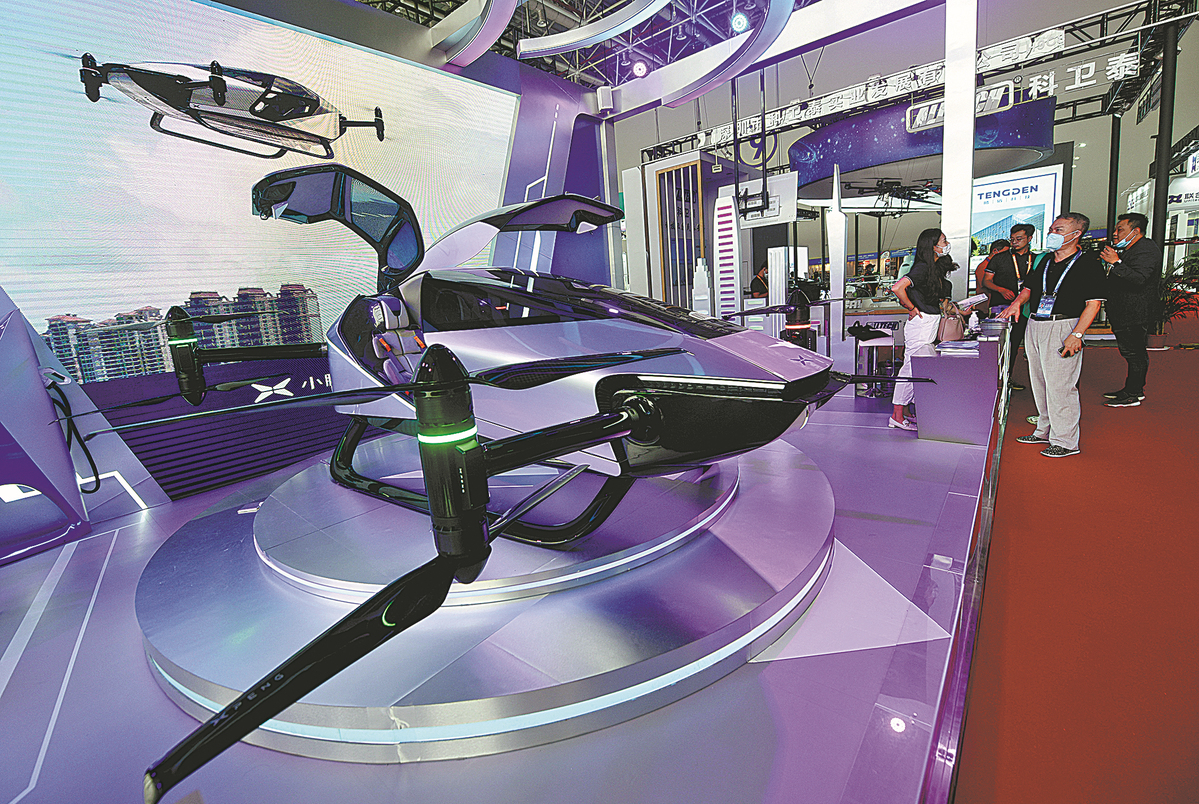Cars of the future await clearance for takeoff


Flying vehicles offer solution to urban traffic congestion
Traffic jams are a common problem in cities around the world, be it Beijing, Tokyo or New York, with some frustrated drivers wishing they could fly over vehicles blocking their path.
Such ambitions may be fulfilled sooner than many expect, with "flying cars", commonly known as electric vertical takeoff and landing vehicles, or eVTOLs, fast becoming a reality.
HT Aero, an affiliate of Chinese electric vehicle maker Xpeng, demonstrated a flying car late last month, saying it plans to introduce these vehicles in 2024.
The cars will feature a lightweight design and rotors that fold away, so that the vehicles can be driven on roads before and after flight. With a number of safety features, including parachutes, each vehicle will cost less than 1 million yuan ($156,400), the company said.
Globally, some 250 companies are developing and producing flying vehicles, and the list is growing, according to a report by consultancy McKinsey.
Robin Riedel, a McKinsey partner, said the flying cars sector has existed for more than a decade, and the "convergence of several trends "has led to increased interest in it.
"First, on-demand services have changed the way we think about mobility. Second, there's a focus on sustainability, which these vehicles support. Third, there's a lot of funding available from investors who want to be a part of the next big thing," Riedel said.
HT Aero, which last month raised $500 million in its latest financing round, is now valued at more than $1 billion. Startup Joby Aviation, based in the United States, went public on the New York Stock Exchange in August, while Lilium, headquartered in Germany, is also planning a flotation.
The emerging flying vehicles sector, which is now viewed as a serious solution to urban traffic congestion and a new alternative to personal mobility in cities, is expected to grow into a market valued at $1 trillion by 2040 and $9 trillion by 2050, according to global financial services company Morgan Stanley.
Flying vehicles are typically about the size of ordinary ones, or slightly larger. Featuring rotors, or wings and rotors, most of them will fly at speeds of 100 to 300 kilometers per hour and carry several passengers.
Powered by batteries, the cars have less complicated parts than ordinary vehicles, and are safer than light aircraft such as helicopters. Without traditional engines, they are quieter and are also expected to be cheaper.
Fabien Nestmann, vice-president of public affairs at Volocopter, a company based in Germany that focuses on making flying an option for everyone and on reinventing mobility in urban areas, said: "We don't want this to be a toy for the wealthy, but part of a well-integrated journey for anyone in an urban area. Everyone should have the option to walk, be driven, cycle, or fly."


















